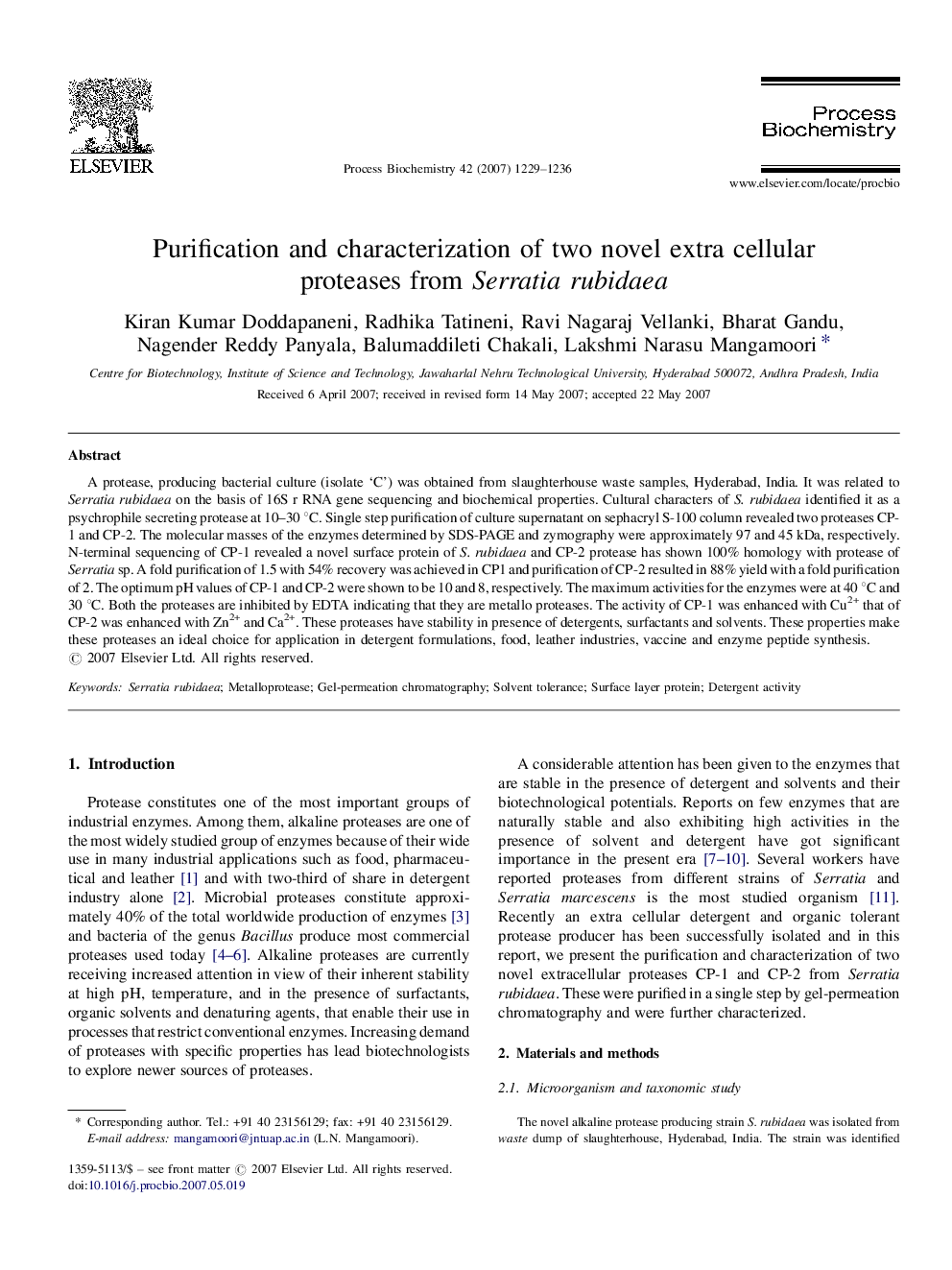| Article ID | Journal | Published Year | Pages | File Type |
|---|---|---|---|---|
| 35820 | Process Biochemistry | 2007 | 8 Pages |
A protease, producing bacterial culture (isolate ‘C’) was obtained from slaughterhouse waste samples, Hyderabad, India. It was related to Serratia rubidaea on the basis of 16S r RNA gene sequencing and biochemical properties. Cultural characters of S. rubidaea identified it as a psychrophile secreting protease at 10–30 °C. Single step purification of culture supernatant on sephacryl S-100 column revealed two proteases CP-1 and CP-2. The molecular masses of the enzymes determined by SDS-PAGE and zymography were approximately 97 and 45 kDa, respectively. N-terminal sequencing of CP-1 revealed a novel surface protein of S. rubidaea and CP-2 protease has shown 100% homology with protease of Serratia sp. A fold purification of 1.5 with 54% recovery was achieved in CP1 and purification of CP-2 resulted in 88% yield with a fold purification of 2. The optimum pH values of CP-1 and CP-2 were shown to be 10 and 8, respectively. The maximum activities for the enzymes were at 40 °C and 30 °C. Both the proteases are inhibited by EDTA indicating that they are metallo proteases. The activity of CP-1 was enhanced with Cu2+ that of CP-2 was enhanced with Zn2+ and Ca2+. These proteases have stability in presence of detergents, surfactants and solvents. These properties make these proteases an ideal choice for application in detergent formulations, food, leather industries, vaccine and enzyme peptide synthesis.
